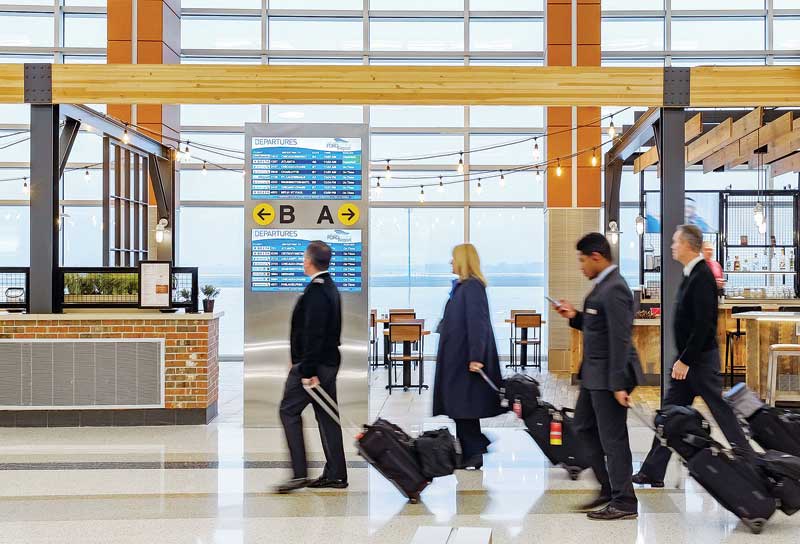
As airports around the world introduce amenities to generate additional revenues, new signs are needed to lead passengers to those areas.
The passenger journey
Given the evolution of airports, the sequence of events for a passenger’s journey is likely to change. Security screening, for example, could be done immediately upon entry to the airport, rather than after checking in and dropping off bags. The process could be streamlined for all user groups, including passengers, non-travelling visitors and staff members.
Some airports have already rejigged their baggage handling systems to allow for remote drop-offs, which directly affects how and when a passenger checks in. Similarly, the increased presence of ‘swing conditions’ (i.e. flexible-use spaces) for multiple functions will affect when, where and how passengers form queues for flights.
Given these changes, digital signs could be leveraged for their versatility, familiarity for users and future affordability. These displays can play a central role in wayfinding as part of a cohesive system.
By being involved in the early stages of a project, signage consultants are better-positioned to provide an overarching wayfinding strategy. When a major expansion was planned at Calgary International Airport, for example, early involvement helped influence a logical and effective ordering and naming scheme for 24 new gates and two new concourses, setting the stage for more intuitive navigation.

When digital displays are placed in appropriate locations with maximum visibility for flight information, they can help offer peace of mind to travellers.
Airport as destination
With the proliferation of air travel, airports have become bigger, a trend that is likely to continue in the future. Like many large cities’ central train stations, they could become cultural and social destinations in their own right.
Indeed, many airports are becoming multimodal hubs, where flying is just one of many types of transportation, from taxis and shuttles to buses and trains. And as these forms of transportation become more readily available, parking lots will become less necessary and, in turn, occupy less space. The same space could be repurposed for other means.
In this sense, airports are somewhat like cities unto themselves, with the surrounding infrastructure synthesizing into a larger, interconnected system, while the core elements can evolve to meet changing needs.
Airports also feel more like destinations unto themselves when they create a true sense of place. There are numerous means for such placemaking, from the colourful pictographics of Germany’s Cologne Bonn Airport to the central waterfall feature of Singapore’s Changi Airport to local artists’ installations at Calgary International Airport.
Providing a seamless experience is the basic precept of ‘integrated mobility,’ which is the common goal for most future-focused transportation services. Through early planning, rigorous consideration and analysis of pedestrian traffic flow and a willingness to adapt signage to anticipate and accommodate users’ needs, it is possible to tailor airport wayfinding to everyone’s benefit.
Angela Carter is a designer for Entro, a Toronto-based environmental graphic design (EGD) firm that develops wayfinding sign systems for airports and other facilities. For more information, visit www.entro.com.





